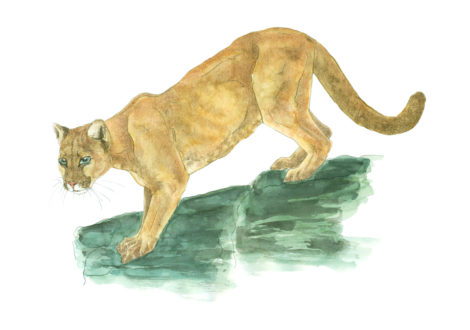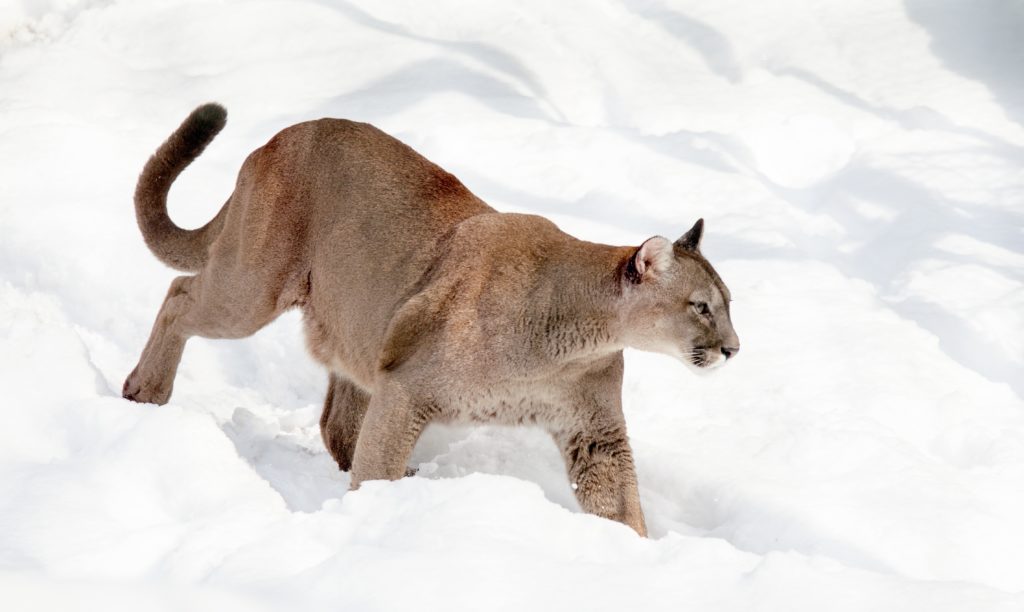
Animal Facts
Also known as cougars, mountain lions are solitary felines and rare to glimpse in the wild. These wild cats feed on meat, and in the Greater Yellowstone Ecosystem, they depend largely on elk and mule deer. Full grown males can weigh up to 220 lbs. Females are smaller, weighing in at around 120 lbs. Unlike other large cats around the world, cougars don’t roar – they can purr, and also make a loud, scream-like cry.
Mountain lions are the fourth largest cat in the world and have retractable claws. During normal walking the claws are retracted, but during quick acceleration they are extended and used for traction.
While large, the mountian lion is not always the apex predator in its range, yielding prey it has killed to black bears, grizzly bears, and gray wolves. It is reclusive and mostly avoids people. Cougars have large paws and large hind legs allowing for great leaping and short-sprint ability. The cougar’s top running speed ranges between 40 and 50 mph.
Conservation Challenges
In addition to habitat loss, one of the largest threats to the area’s cougars is trophy hunting. In Wyoming, it’s legal for hunters to use packs of dogs to track and chase mountain lions, and to kill them for sport. It’s estimated that half of adult cougar fatalities in the region are due to hunting.
During 2019 and the first three months of 2020, 331 mountian lions were killed by trophy hunters. Three hunting units in Wyoming have unlimited quotas and eight hunt units are open year-round putting kittens at risk of abandonment if a female is killed.
While the Wyoming Game and Fish Department conducts research on lion populations in the state, they have never released a population estimate; instead, they manage cougars based on population trend estimates. There are serious concerns that overharvest in some parts of Wyoming is leading to localized population declines.

